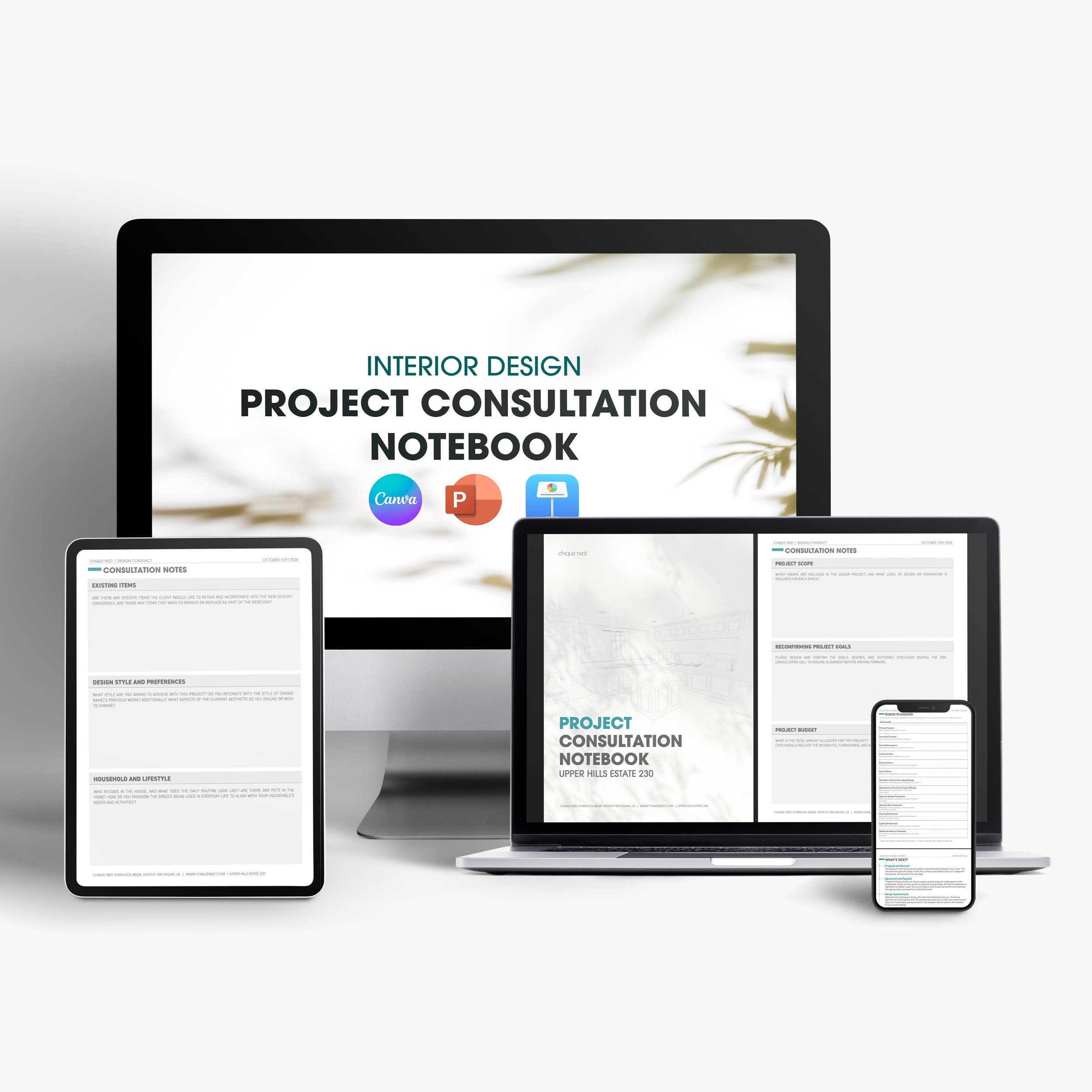Should You Display Pricing on Your Interior Design Website?
To display pricing or not to display pricing—that is the question.
When I started my business over a decade ago, I made the decision to put my pricing on my website, and I firmly believe that you should too. I’ve never come across a solid reason why you shouldn’t be transparent about pricing.
In fact, not showing pricing can hurt your business. Many potential clients will leave your site rather than reach out for pricing information. By not sharing this upfront, you’re missing out on potential inquiries and opportunities.
Why You Should Include Pricing on Your Website
Makes It Easier for Clients
Here’s the truth: clients don’t want to jump through hoops to figure out if they can afford your services. If they have to spend time reaching out, waiting for responses, and then potentially going through a lengthy conversation to get pricing, they’ll likely just move on to another designer.
Including pricing on your website means your clients can quickly assess whether your services fit their budget, saving both you and them valuable time. Most clients won’t want to contact multiple designers for pricing. If your pricing is transparent, they can immediately determine whether you’re in their price range.
Prevents Frustration and Confusion
Put yourself in your clients’ shoes for a second. Think about how annoying it would be to call or email 10 designers just to get an idea of their rates. The frustration builds when the response is vague or when you’re given the “well, it depends” answer. The reality is, this whole process is time-consuming for clients and you, and it could leave them frustrated.
By adding pricing information on your website, you simplify the process. You save clients from needing to ask a thousand questions just to figure out if you’re the right designer for them.
Helps Build Trust
Being upfront with your pricing creates an atmosphere of trust. It shows your potential clients that you’re transparent and fair. When clients see your pricing clearly listed, they understand that you’re not altering your rates based on the size of their budget or any other hidden factors. This level of transparency helps establish credibility and fosters trust with clients who might otherwise hesitate to move forward.
Streamlines Your Onboarding Process
Your website is the first step in the client onboarding process. You want to attract the right clients and weed out those who aren’t a fit, and displaying pricing allows for this. By giving potential clients an idea of what you charge, they can quickly determine if they can afford your services without wasting time on both ends.
Let your website do the qualifying work for you. This way, only clients who are comfortable with your pricing will reach out, saving you from having to sift through inquiries from those outside your target budget range.
How to Include Pricing on Your Website
There are many ways to include pricing information, and you should choose an approach that feels comfortable for you. But the key is to be clear, transparent, and confident about how you price your services. Here are some examples of how you can include pricing:
• “Our design projects typically range from $X to $Y.”
• “Our project minimum is $X.”
• “My hourly rate starts at $X.”
• “Our design fees begin at $X.”
• “We work with budgets starting at $X.”
• “Packages available from $X.”
These are just examples, but the important thing is to give people a clear idea of what they can expect. Don’t leave them hanging when they’re trying to decide which designer to hire. You can give them an idea of what your services cost without listing every detail, and this will help them make a more informed decision.
At the end of the day, being open about pricing shows your clients that you’re not only transparent but also confident in your worth. By doing this, you’ll attract the right clients—those who are aligned with your services and who will appreciate the transparency you offer.
In my experience, providing pricing on your website doesn’t just simplify the process for clients, it also sets your business up for more meaningful, productive relationships with those who are ready to invest in your services.
This article may contain affiliate links for your convenience. By clicking on any of these links and completing a purchase, we may earn a small commission, at no extra expense to you. Your support for this blog is greatly appreciated.








